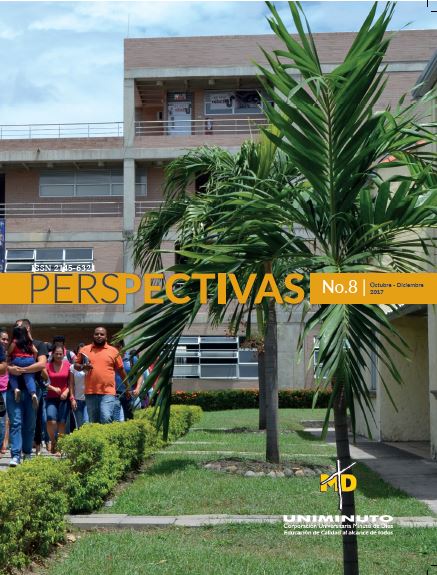Cómo va Colombia en inclusión financiera
Contenido principal del artículo
Resumen
Los programas de educación financiera no han sido exitosos en Colombia. El informe de la Superintendencia Financiera presenta porcentajes muy bajos de participación entre los años 2014 y 2015 con un 8% para microempresarios y 3% de ciudadanos. Es por ello que desde la Oficina del Consumidor Financiero se ha lanzado para el año 2017 el programa de “Educación financiera para todos” en alianza con el sector educativo donde se pretende abarcar diferentes zonas del país llegando a toda la comunidad, y brindando la oportunidad de conocer, capacitar e ingresar a cada ciudadano por la vía del buen uso de canales de financiación legales establecidos en el país, para uso de los usuarios financieros.
Palabras clave:
Consumidor financiero, Canales de financiación, Educación financiera
Detalles del artículo
Sección
Artículos de investigación
Cómo citar
Jara Ochoa, J. Y. (2018). Cómo va Colombia en inclusión financiera. Perspectivas, 2(8), 48-53. https://revistas.uniminuto.edu/index.php/Pers/article/view/1611
Referencias
Subirats. (2005). Exclusión social y desigualdad. Recuperado de https://books.google.com.co/ books?id=Hq4zvOB7a9QC&pg=PA33&lpg=PA33 &dq=Subirats,+Gom%C3%A0+y+Brugu%C3%A9, +2005&source=bl&ots=MWI1VY8l5c&sig=OoHO HNz89Ut1iXsKKZb_oJGN8K8&hl=es-419&sa=X &ved=0ahUKEwjOjo6snPnQAhWENiYKHZtbB0Q6AEISTAI#v=onepage&q
=Subirats%2C%20G
Subirats, G. y. (s. f.). De la pobreza la exclusión social. Recuperado de http://creasfile.uahurtado.cl/Subirtas, %20Brugu%C3%A9%20y%20 Gom%C3%A1%202002%20De% 20la%20pobreza%20a %20la%20exclusi% C3%B3n%20social.pdf
Superintendencia Financiera. (2014). Reporte Inclusión. Recuperado de https://www.superfinanciera.gov.co/jsp/loader.jsf?lServicio=Buscador &lTipo=busqueda&lFuncion=BuscadorView
=Subirats%2C%20G
Subirats, G. y. (s. f.). De la pobreza la exclusión social. Recuperado de http://creasfile.uahurtado.cl/Subirtas, %20Brugu%C3%A9%20y%20 Gom%C3%A1%202002%20De% 20la%20pobreza%20a %20la%20exclusi% C3%B3n%20social.pdf
Superintendencia Financiera. (2014). Reporte Inclusión. Recuperado de https://www.superfinanciera.gov.co/jsp/loader.jsf?lServicio=Buscador &lTipo=busqueda&lFuncion=BuscadorView

